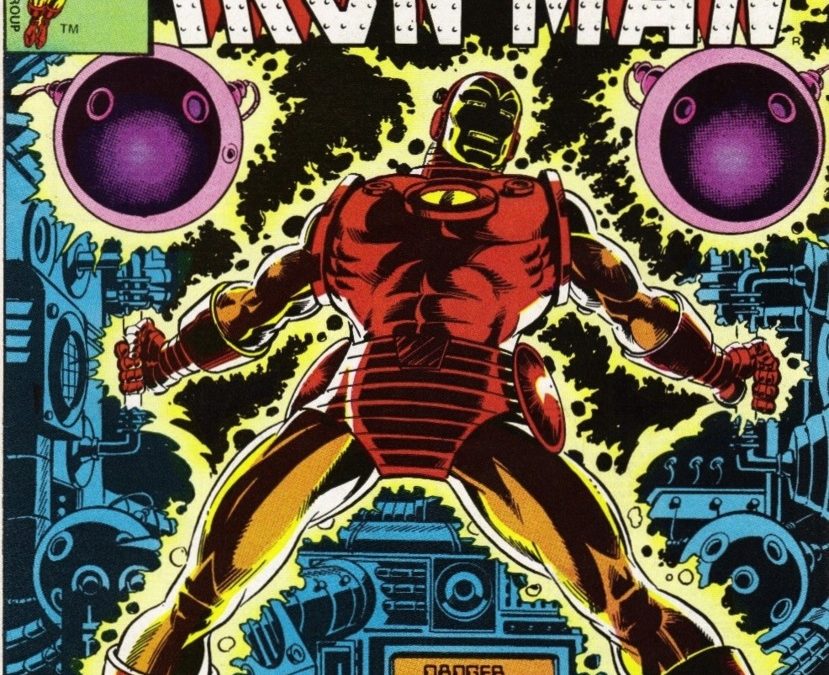
Are The Military Building An Iron Man Suit?
Most people nowadays are familiar with Tony Stark and his powerful Iron Man suit. But how close are we to building an Iron Man armour? Are The Military Building An Iron Man Suit?
When it first appeared in the comics in the 60s people fell in love with the billionaire genius in a super suit. It didn’t seem like a possible reality, but technology advancement might prove people wrong.
In 2013 U.S. Special Operations Command Chief Adm. William McRaven presented the possibility of re-creating this suit for military use in real life.
Tactical Assault Light Operator Suit (TALOS) could offer an upper hand of any operator in battle. It would create an advantage over the enemy, and provide an insight in the physical and mental state of the wearers at all times.
Table of Contents
What Is TALOS?
The TALOS armour is made from a material that exists either in solid or in liquid form which can be changed under an electrical current. It could offer effective, lightweight protection against bullets.
The operator wearing the suit would also have climate control and the suit would closely follow the vitals of the operator. Night vision and oxygen supply would also help protect the wearer during extreme conditions.
”I commit to this idea that the last personnel we lost should be the last we lose in this fight and the future fights to come,” McRaven remarked.
Has The British Navy Showed An Interest In An Iron Man Suit?
There is interest from the British military to create suits of armour for assault on enemy vessels. It could create a new style of combat on land or at sea offering a more effective way of dealing with pirates at sea.
Gavin Williamson, the Secretary of Defence spoke about the budget allocated to defence. He made an announcement in Portsmouth, England while watching a demonstration by a private technology firm – Gravity.
This company offered a demonstration of a prototype suit that can propel it’s user up to 10 000 feet into the air using a jet engine. Jet engines are not new, but their use this way would be an innovation as never before.
However, this technology is expensive costing about 340 000 GBP or about 450 000 USD per unit. Williamson was keen on sketching out possible scenarios where this technology would offer an advantage over the enemy.
He also talked to the test pilot from Gravity to share insights into the suit and the new possibilities it offers.
“Imagine attacking enemy ships with this suit!” Williamson exclaimed after the demonstration.
Iron Man’s suit and the idea of re-creating it in real life is not new. The last five years several different variants have been tried but February marked a first real success.
U.S. Special Operations Command (SOCOM) is the closest of all as far as technology and manufacturing are concerned. They had plans to start testing the exoskeleton suit as soon as possible.
What Will The SOCOM Exoskeleton Be Able To Do?
The ‘Iron Man’ suit is becoming more real every day. The Pentagon and the Special Operations Command is looking at the ideas for an exoskeleton suit.
TALOS or the Tactical Assault Light Operator Suit will offer new advantages to the American military operators.
The SOCOM lists the advantages this suit could offer, such as:
- An exoskeleton that can carry 75 pounds without a power supply. A fully powered suit could carry up to 150 pounds.
- Echolocation mapping and Doppler imaging as well as other sensors allowing for better visibility for the wearer.
- Better protection in a firefight to the operator’s head. SOCOM suggests that a transparent visor would give the face full protection against the enemy The suit would allow for more body armour additions as well.
- Better aiming capabilities and a possibility to visualise the projectile flight trajectory
- SOCO insists on excellent communications technology as an addition to the suit. It should be able to pick up several signatures and signals from the battlefield. Enemy position, weapons systems and vehicles as well as ISR assets and IEDs.
- The suit should have enough energy to operate silently and non-stop for several hours
- SOCOM wants a suit that would monitor the physical and mental well-being of the wearer, making it easier to diagnose trauma in battle
TALOS certainly fits the idea of Iron Man and other sci-fi fighting forces, there are concerns about the weight and reliability of such suit.
There is a possibility that it would be cumbersome and do more harm than good.
So Is The Iron Man Suit Still Getting Built?
Although Adm. Willian McRaven said in 2013 that there are plans for the modern military to build a super suit to aid soldiers in battle, by 2019, people are more sceptical.
McRaven was committed to the finished product helping operators in battle. It was going to improve the survival of soldiers in a firefight.
It was supposed to offer protection against bullets and help soldiers on operations when scanning for the enemy. However, the project met an untimely demise.
The prototype drawings looked glamorous and exciting. For four years there seemed to be progress with building an Iron Man armour but the final results were not near what original intentions led us to expect.
The technology developed has allowed the military to develop new lightweight armour along with helmet displays offering situational awareness.
The details were confidential, so the general public didn’t see the efforts. In 2019 SOCOM stated that the finished product was not quite what was promised.
It just wasn’t enough to create the super suit ready for testing and mass manufacturing.
The technology seems to be unreachable at this stage and the project is now retired. Surely, engineers and scientists will take it off the shelf and dust it at a later date, but for now, it’s still only possible in movies and comics.
What Is The Nearest Technology To An Iron Man Suit Today?
So how close are the military to building an Iron Man suit? What new technology do they have that comes close?
Modern soldiers can take advantage of lower body boosters to make marching long distances easier. These are inconvenient for battle however so will need to be removed during a conflict.
The military is already familiar with Load-reducing exoskeleton components, such as Lockheed Martin’s ONYX and FORTIS. These will continue to be implemented in future missions.
As helpful as these technologies are, they are nothing like the Iron Man-like armour promised in the original SOCOM promotional material.
These more elaborate suit designs are primarily held back due to issues of power supply.
Current technology does not offer sufficient power required to manage the intense load-carrying capacity that the SOCOM TALOS suit concept required.
There is a lot more research and development required before any type of full-body exoskeleton becomes practical.
So for now a real life Iron Man Armour is not available. Only once a suit can be powered away from a reliable power supply will it be feasible for use in combat situations.
And this is why Stan Lee needed to create a power source for Iron Man that defied the laws of physics.
If you are a fan of Iron Man, check out this article. It offers easy to follow instructions to build your own Iron Man Armour.
Article References:
Check out the rest of our content about Iron Man.










